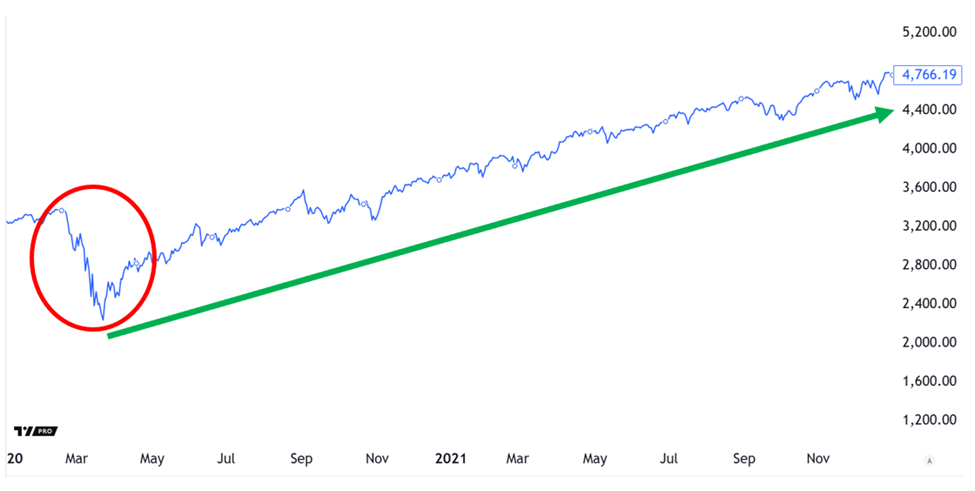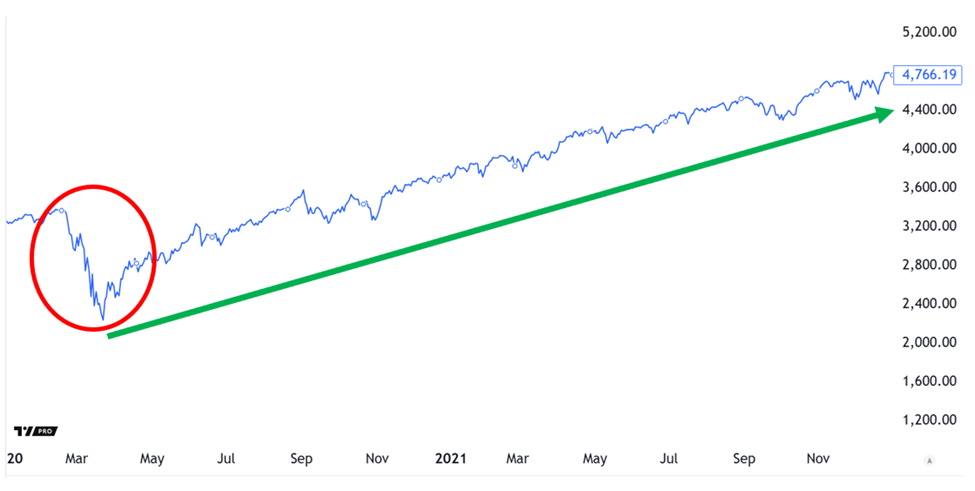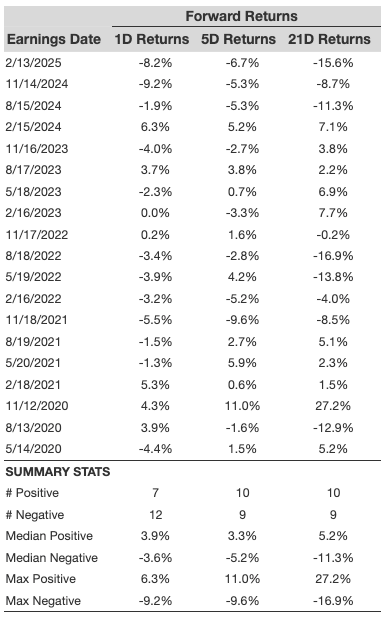“`html
Economic Data Raises Questions: Is This a Market Buying Opportunity?
This morning, investors were met with three significant pieces of macroeconomic data:
- The GDP report
- The Personal Consumption Expenditures (PCE) price index
- The ADP jobs report
Starting with the GDP, Q1 contracted by 0.3%, a stark contrast to the 2.4% growth seen in Q4 of 2024. This marks the first negative GDP since early 2022.
The Commerce Department noted that this decline primarily resulted from an increase in imports and a decrease in government spending.
Despite President Trump’s tariffs coming into effect post-Q1, the spike in imports suggested companies rushed to buy ahead of deadlines.
Investor Louis Navellier emphasized this trend in his morning alert, stating:
There was a rush to import goods ahead of the tariff deadlines, causing imports to surge 41.3% and reducing growth by 4.8%.
This indicates that, without the import impact, growth would have remained positive, leading me to view this report favorably.
Next, the PCE inflation figures provided a mixed picture for investors.
The month-to-month headline reading was stable, which is positive.
Core inflation, which excludes food and energy costs and is favored by the Fed, also showed no change, better than the expected 0.1% increase.
However, year-over-year headline PCE inflation rose to 2.3%, surpassing the forecast of 2.1%—a negative outcome.
Similarly, “core” PCE inflation increased by 2.6%, exceeding the forecast of 2.5%.
Market participants on both sides will interpret this data to support their arguments. A prudent approach may be to wait a bit longer for clearer insights into the tariffs’ effects on prices.
Lastly, the ADP jobs report noted an addition of only 62,000 private-sector jobs in April. This figure is down from 147,000 in March and represents the smallest gain since last July. Additionally, it is less than half of Dow Jones’s forecast of 120,000.
These data points collectively portray a hesitant economy struggling to adapt to current challenges.
As for the stock market’s response, all three major indexes registered declines as of this writing, yet they are recovering from earlier lows.
So, what should we make of this economic data against the backdrop of a recent market rally?
Are today’s uncertainties indicative of a “buy the dip” opportunity amidst ongoing market recovery, or do they signal a potential downturn?
A Quote from Warren Buffett on Investment Opportunities
Market veteran Warren Buffett once said, “A great investment opportunity occurs when a marvelous business encounters a one-time, huge, but solvable problem.”
This viewpoint holds relevance for broader investment markets, which recently faced their own challenges.
The S&P 500 experienced its significant Covid-related collapse in 2020, ultimately proving to be a prime buying opportunity with a historic rally.

Source: TradingView
Are we experiencing a similar buying chance now?
As we entered January, market valuations seemed stretched, but not to an alarming extreme. The economy was fundamentally solid.
The recent setbacks appear to be largely self-inflicted—suggesting they can be corrected.
Luke Lango, our hypergrowth expert, believes this correction is on the horizon, and although some gains have been factored in, the largest profits may still lie ahead.
A Bullish Indicator Signals Market Strength
Luke utilizes an array of indicators, charts, and fundamental ratios to gauge market trends. One notable indicator is the Zweig Breadth Thrust (ZBT), which indicates bullish momentum.
The ZBT triggers when the percentage of advancing stocks on the NYSE jumps from below 40% to above 61.5% within a 10-day moving average.
This rare upturn implies many stocks are gaining traction, often foreshadowing the end of bearish phases and the start of significant market rallies.
The ZBT signal was triggered last Thursday.
According to Luke:
The ZBT has only been activated 18 times since World War II. In each instance, stocks were higher a year later, averaging gains of 25%.
This isn’t mere noise; it’s a clear signal.
Additionally, last week, the S&P 500 achieved three consecutive days of gains over 1.5%, another unusual signal. Historically, such occurrences associated with increases of 10% a year later.
You don’t typically see this kind of upward movement during a decline; rather, it signals the ending of one.
We believe the market has reached its bottom, and we are optimistic heading into the summer.
Investing in the Summer Bull Market
In yesterday’s update, we presented Luke’s “MAGA 7” stocks, a clever reference to President Trump’s slogan:
M…
“`
AI Robotics to Drive U.S. Manufacturing Revitalization
In the current discussion, “AI” refers specifically to next-generation AI robotics aimed at reinvigorating the American manufacturing sector.
Yesterday’s Digest outlined why the onshoring initiative may not yield millions of new jobs for human workers. Simply put, the math doesn’t support such an outcome.
As a solution, Corporate America will increasingly rely on AI. Companies are expected to accelerate the adoption of robotics to reduce input costs and mitigate rising trade-related expenses.
This trend will create a significant advantage for a select group of stocks positioned at the center of this economic shift. Luke is focusing his efforts on identifying these opportunities:
My MAGA 7 stocks comprise seven emerging AI companies—many of which you might not be familiar with—that are poised to benefit from substantial federal funding, corporate investment, and a push towards reshoring.
These companies are developing essential tools, laying down the necessary infrastructure, supplying the chips, automating factories, and powering the intelligence behind America’s next tech renaissance.
To learn more about this collection of AI leaders and the broader investment landscape surrounding AI and robotics, Luke will host his 2025 Summer Panic Summit tomorrow at 7 PM Eastern.
Here, Luke explains why the term “panic” is relevant:
Investors are currently holding a staggering $7 trillion in cash, waiting for the perfect moment to invest. Private equity alone has at least $2.62 trillion, according to S&P Global Market Intelligence.
The ZBT Indicator suggests that a market surge is imminent, and a potentially larger catalyst may arrive on May 7, creating a summer “panic” not seen since 1997.
Just as many skeptics during the initial Covid rally eventually jumped into the market, Luke anticipates a similar trend in the upcoming weeks and months. Details will be provided on Thursday. Click here for immediate registration.
Reflecting on Buffett’s notion of a significant yet solvable problem, Luke shares a measured perspective:
Volatility can create opportunity.
While every market sell-off feels troubling in the moment, history often reveals them as valuable chances.
This instance will be no different.
Hidden beneath present market chaos lies the foundation for the next major tech rally.
For updates, click here to sign up instantly.
Shipping Traffic Decline Raises Supply Chain Concerns
In yesterday’s Digest, we reported on the decline in shipping traffic from China to the U.S.
According to Vizion Global Ocean Bookings Tracker, vessel traffic from China to the U.S. has decreased by 22.2% over the past two weeks and is down 44% year-over-year.
This trend is leading to an increase in “blank sailings” between the two countries.
To explain, maritime news site Splash 247 states:
Blank sailings occur when ocean carriers skip scheduled port calls due to low demand or equipment shortages, impacting supply chains.
In April 2025, over 80 blank sailings were reported, exceeding the 51 recorded in May 2020, indicating a severe downturn in global shipping.
The Sea-Intelligence Blank Sailings Tracker monitors weekly planned blank sailings and the capacity taken out of the market.
Recent data from Sea-Intelligence, described as “staggering” in a recent report, shows that container demand is expected to be 28% lower than anticipated for week 18 on the Asia to U.S. West Coast trade lane, while for week 19, a 42% reduction is expected on the Asia to U.S. East Coast lane.
This does not mean consumers should rush to stock up on toilet paper—over 99% of it used in the U.S. is domestically produced. However, shortages in toys, apparel, and furniture may arise in the coming weeks.
According to Investopedia: If traffic remains depressed, Americans might experience shortages of commonly imported items from China, which could drive prices higher, as noted by Torsten Sløk, chief economist at Apollo Global Management.
Fast-changing trade policies may significantly impact toys, apparel, and furniture markets.
In 2024, the U.S. imported $41 billion in toys, games, and sports equipment, with over 70% sourced from China, according to the Department of Commerce.
It’s important to remember that supply chains can shut down quickly but may take months to restart, as experienced during Covid.
As the trade conflict continues, the risk of shortages stretching into the back-to-school and holiday shopping seasons increases.
Navigating Investment Challenges
Reflecting on earlier points made in this Digest:
The economic damage experienced over the past two months has largely been self-inflicted, which means it can also be self-corrected.
Just one statement from President Trump could initiate corrective measures, potentially leading to a market rebound.
A substantial investment opportunity emerges when a volatile stock market faces a significant yet resolvable trade conflict.
That’s the perspective we’re adopting, and it’s where Luke positions his readers for future growth.
Wishing you a good evening,
Jeff Remsburg

